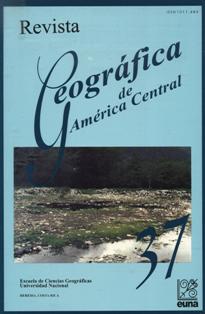EL ANÁLISIS MULTICRITERIO, UN CASO ESPECÍFICO: PROYECTO PROLAND
Abstract
La técnica del análisis multicriterio se aplicó en la evaluación de técnicas de manejo alternativo para áreas de pendiente deforestadas usadas en la agricultura en Costa Rica y Guatemala. Se identificaron objetivos de evaluación entre los actores locales, con la ayuda de diferentes herramientas; pudiéndose identificar la pérdida de suelo, el ingreso de la finca, los insumes agrícolas, el lavado de nitrógeno, protección de la biodiversidad y necesidades nutricionales. Luego mediante algoritmos y fórmulas matemáticas, fueron caracterizados todos los objetivos. Este modelo se utilizó como base para la construcción de una herramienta para apoyar la toma de decisiones que hace posible el cálculo del valor de cada objetivo bajo diferentes escenarios de producción y protección.
ABSTRACT
The multimedia analysis approach was applied to the evaluation of alternative management practices in deforested sloping áreas used for farming in Central American countries (Guatemala, Costa Rica). A major number of major evaluation objectives were identified, with the help of workshop ,whit local actors, including soil loss, farm income, agricultural inputs, nitrogen leaching, protection of biodiversity, and local nutrition needs. Then, appropriate algorithms and other mathematical formulas were put together for the quantitative characterization of all these objectives. This model was used as the basis for the construction of a user-friendly decision support tool, making possible the calculation of the values of the objectives for each scenario.
Downloads
How to Cite
Issue
Section
License
Proposed policy for journals offering Open Access
Authors publishing their works in the Journal acknowledge and agree to the following terms:
a) Authors retain the copyrights to their works and guarantee the Journal the right to be the first to publish their works, under the Creative Commons License Attribution-NonCommercial-ShareAlike 4.0 International, CC BY-NC-SA 4.0 International (https://creativecommons.org/licenses/by-nc-sa/4.0/deed.es), which allows others to share works upon complying with the acknowledgment of authorship and mention of the Journal as the original publisher of the work.
b) Authors are permitted to separately establish additional agreements for the non-exclusive distribution of the official edition of the work published in the Journal (for example, authors may desire to place the work in an institutional repository or incorporate it into a book that is to published elsewhere) so long they acknowledgment to recognize the Journal as the original publisher. The aforementioned additional agreements must respect the terms of the non-profit character and sharing philosophy of the original license (CC BY-NC-SA 4.0 International, https://creativecommons.org/licenses/by-nc-sa/4.0/deed.es).
c) Authors are encouraged to archive the post-print or editor/PDF version in Open Access repositories.






 REVGEO is licensed under https://creativecommons.org/licenses/by-nc-sa/4.0/deed.es
REVGEO is licensed under https://creativecommons.org/licenses/by-nc-sa/4.0/deed.es
.svg_4.png)

_(1).png)
_(1)_(1)_(1)_1.png)
(2)(1)(1)(1).png)
